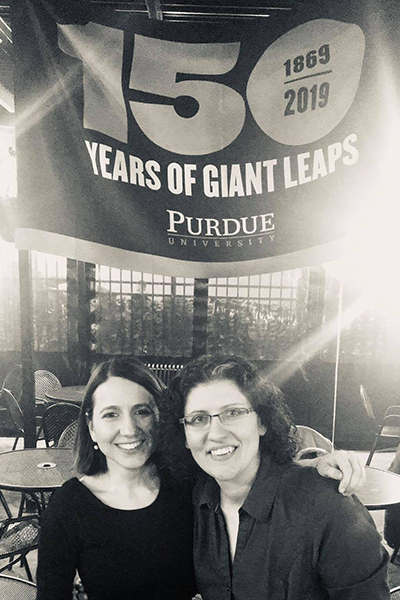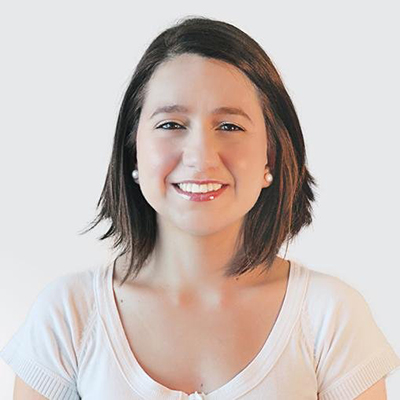Evolution of a Research Relationship: From PhD Student to Peer
Story by Phillip Fiorini
 HHS Professor Georgia Malandraki and Cagla Kantarcigil celebrate after Cagla's successful dissertation defense. The dissertation focused on validating the new sticker-like sensor wearable patch in a group of healthy older adults.
HHS Professor Georgia Malandraki and Cagla Kantarcigil celebrate after Cagla's successful dissertation defense. The dissertation focused on validating the new sticker-like sensor wearable patch in a group of healthy older adults.
Evolution of a Research Relationship: From PhD Student to Peer
Through her persistent pursuit of a doctoral degree at Purdue University, Cagla Kantarcigil was critical in advancing efforts on an affordable and wearable sensor, developed by professors Georgia Malandraki and Chi Hwan Lee, to track potentially deadly swallowing disorders.
Just as important, Kantarcigil developed a valuable and supportive relationship with Malandraki, her faculty advisor and an associate professor of speech, language, and hearing sciences. And Kantarcigil has taken that connection, along with the knowledge and experiences of the many hours in Purdue’s Imaging, Evaluation and Treatment (I-EaT) Swallowing Research Lab, with her in a postdoctoral fellowship at Northwestern University’s Communication Sciences and Disorders Department.
“During my PhD, Dr. Malandraki and I have cultivated an extremely productive, intellectually stimulating and supportive mentor-mentee relationship,” Kantarcigil says. “I also have gained important skills on how to manage a research laboratory, coordinate projects, and supervise undergraduate research assistants — skills that are essential for a future career in academia.”
Those skills stemmed from preparing research protocols, obtaining IRB approvals, collecting, analyzing and interpreting data and writing or co-authoring research papers. Kantarcigil also presented her work at national and international conferences, namely the American Speech-Language and Hearing Association and the Dysphagia Research Society annual meetings.
 Cagla Kantarcigil
Cagla Kantarcigil
For her dissertation, Kantarcigil examined the use of wireless, ultra-thin wearable surface electromyography (sEMG) sensors for telehealth applications. The sensor used technology designed to record high-quality sEMG signals from the challenging curvilinear surface of submental muscles.
A randomized, controlled cross-over design was used to compare the wearable sEMG sensors with commercially available sEMG sensors based on signal quality, safety, ease-of-use and satisfaction. Kantarcigil says results showed that the quality of the signal acquired by the wearable sEMG sensors was comparable to that of conventional units.
“Implementing telehealth protocols for patients who live in rural areas will increase access to high-quality care and improve patient health outcomes,” Kantarcigil says.
More Life 360 Stories
Milestones
Alumni
- Model Behavior
- On the Frontline of COVID-19
- Alumni making giant leaps in health care, aviation industries
- Tradition Transformed
- Emerging Leaders
Research
- Wearable and affordable, device targets swallowing disorders
- Evolution of a Research Relationship: From PhD Student to Peer
- Rapid Response Grant Recipients
Faculty
- Wearable and affordable, device targets swallowing disorders
- Beware the ‘quarantini’
- Safe and sustainable tourism in times of COVID-19
- Building a Community of Support
- Adapting Online … in a Hurry
- Thinking Beyond the Pandemic
- Rapid Response Grant Recipients
- Risk & Resilience: How the Pandemic Affects Those with Special Needs
Students
- Evolution of a Research Relationship: From PhD Student to Peer
- On the Frontline of COVID-19
- Tradition Transformed
- Adapting Online … in a Hurry
- Pandemic Pivot brings Gen Zs and Baby Boomers together in unique way
- HTM students learn and build community
- Emerging Leaders
